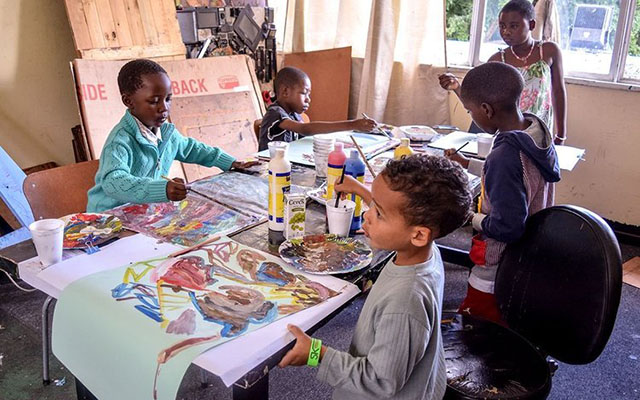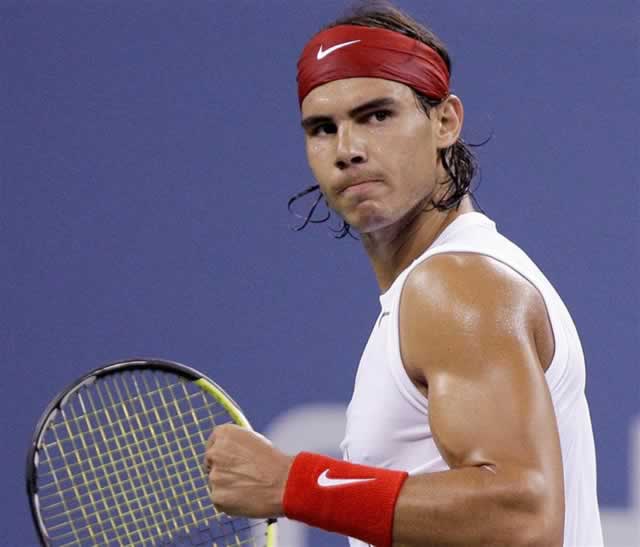Visual art’s benefits beyond the eye


Children painting at the Gallery after a tour of running exhibitions
At the Gallery
Art is a universal language. Thousands of years ago, mankind told stories about their values, traditions and beliefs through paintings on cave walls and rocks. The oldest documented forms of art are visual arts, which include creation of images or objects in fields including painting, sculpture, printmaking, photography, and other visual media.
Through the ages, artists have relayed history through these paintings, drawings, paintings, architecture and sculptures. Joy, sorrow, anger, love, peace are some of the emotions and experiences that can be shared in a sketched line or a splash of colour.
Creating art in its various forms is a very effective way to stimulate the brain and practically anyone can do it. This week we feature some of the best ways creative expression in the visual arts can benefit both young people and adults.
Art educators highlight that visual art encourages fine motor skills, neural development, language development and problem-solving abilities and that in children it can be used effectively to teach and understand other key subjects such as reading, writing, math, and science. Therapists assert that art is valuable because it can allow individuals to process their world, to deal with sometimes scary emotions in a safe way because it gives them critical sensory input. Artists tell us that art is important for its own sake as a source of aesthetic beauty and expression, as well as simply for the process of creating.
Scribbling, drawing dots and lines, mixing colours with a paintbrush, cutting with scissors, controlling a glue stick or squeesing a glue bottle, kneading and rolling play dough, tearing paper; these are tasks which require increasing amounts of handiness and coordination. As children engage in these art activities over time, their fine motor skills improve. The more they scribble, the more they are able to control the crayon or paint brush and its movements across the paper. As children learn to control their scribbling, they make a wider variety of shapes, eventually making all the shapes necessary to write the letters of the alphabet.
“Visual art is a form of communication to a child which can lead to language development. If the child is given the platform to comment on works of art and say this is nice or this is good or this is yellow, green, white, or that is a square, rectangle shape that is language development, they are actually learning to communicate through pronouncing names of colours and shapes,” said Mr Blessed Simba an instructor at the National Gallery School of Visual Art and Design. Early art education can help children develop problem-solving abilities that may come in handy later on in life. Through experimenting with different colours and techniques children learn creative and new resourceful ways of solving problems in artwork, and in life.
“Art education can enable a child to develop problem solving skill because it allows the child to experiment, learn and create. For example at the Gallery we have young students who come for the art classes, holiday art camp and the School of Visual Art and design, and what I have observed is that when the students need green and it is not there but there is yellow, blue, red they experiment with those primary colours that are available and as they experiment with the colour they are already venturing into a scientific exercise where they are exploring the properties of yellow and blue in order to get the green they want, thus problem solving. This is can be applicable later on in life when faced with challenges in life to which the answer is not obvious, they would have to run around and mix this and that to get the solution to life problems,” said Mr Simba.
Creativity is the route to authenticity through self awareness and expression. As we create, we plumb the depths of our being, accessing what we think and believe in. Through creative self-expression, we grow in self-awareness by building a connection between inner and outer experiences, generate insights and resolve problems. The more we create, the more we discover and realise our impulses, habits and desires. There is no right or wrong way to be an artist. When we create, we are given the opportunity to engage with the world without judging ourselves. We have permission to take risks, experiment, try new things, and strip away inhibitions in a healthy and creative way.
Many researchers have proven that art making is meditative and can potentially relieve stress. There’s a certain quality of being in ‘flow’ that experts say is created by being engaged in the creative process. The flow refers to a state of being completely immersed in something to the point of being in a near-meditative state. This also works as a distraction to take your mind off of what’s stressing you, at least for a few minutes. And when you’re finished being engrossed in your sketches, chances are you should have a clearer head with which to tackle your problems again.
Adult art colouring books have become popular due to the fact that some researchers have alluded that art can work as tool for stress relief. Turning those monochromatic shapes into impromptu colour field has been proven to reduce stress.
“At the Gallery we offer the Saturday Art classes and the adult art classes as a way of encouraging the young and adults to express themselves in a new way and for them to unearth hidden abilities and talents through experimenting with different media of art. Students are given instruction in fundamental composition building skills. Subject matter includes portraiture, still-life, observation, drawing, painting, mixed media, 3D work and print making. Students also draw inspiration from running exhibitions in the Gallery. Classes run during normal school terms; January to April, May to August, and September to December and at the end of the year students graduate with certificates of achievement.”
Registration forms can be downloaded from the Gallery website www. nationalgallery.co.zw. Alternatively, forms can be obtained from the Gallery reception desk.
For more information contact the department of education on 04-704666 /7 Email — [email protected].









Comments